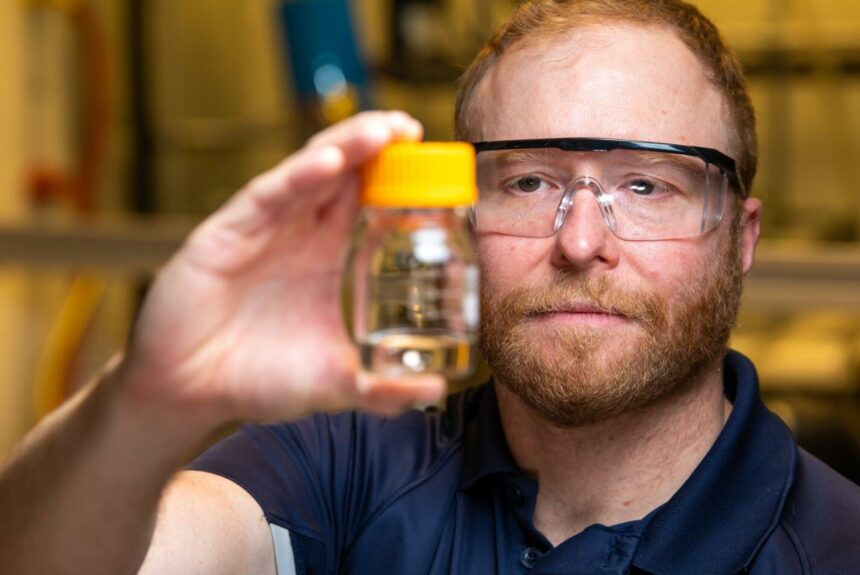As the need to reduce emissions becomes more prevalent, technologies are emerging to address the world’s greenhouse gas footprint. One exciting solution is carbon capture, which captures and stores emissions from industrial processes before they enter the atmosphere. While this process is effective in lowering emissions, carbon capture technology has been hamstrung by its high implementation costs. Thanks to a new breakthrough, however, carbon capture may soon become a cost-effective climate solution.
>>>READ: A Canadian Startup Builds Nuclear Fusion Power Plant
Scientists at the U.S. Department of Energy’s (DOE) Pacific Northwest National Laboratory (PNNL) just revealed one of the most cost-effective carbon capture technologies to date. The new system does not just capture carbon—it creates methanol. Why is this important? Because having the technology to integrate both capture and conversion into one system brings costs down. And, methanol is one of the world’s most widely used chemicals, which means this new system can bring businesses an additional revenue stream while negating emissions from industrial-scale methanol production.
What happens to carbon after it is captured at the source of emissions or pulled out of the air? One possible option is carbon sequestration, where it is stored. But we are beginning to see an increase in using captured carbon to make consumer or industry products. Doing so makes carbon capture more financially rewarding by creating a source of revenue. It also slashes our greenhouse gas footprint by repurposing already-emitted CO2 for new products.
That is exactly why the methanol production from PNNL’s system is important. The substance is used for many things: fuel, solvent, and as an ingredient in plastics, paint, construction materials and more. PNNL researchers believe that being able to use captured carbon to make such a widely used product is what will encourage implementation.
This new system is compatible with coal, gas, or biomass-fired power plants. It can also be installed to work within cement kilns and steel plants. Here’s how it works:
PNNL chemist David Heldebrant, the research team’s lead, explained that the whole process is a bit like recycling:
“Instead of extracting oil from the ground to make these chemicals, we’re trying to do it from CO2 captured from the atmosphere or from coal plants, so it can be reconstituted into useful things. You’re keeping carbon alive, so to speak, so it’s not just ‘pull it out of the ground, use it once, and throw it away.’ We’re trying to recycle the CO2, much like we try to recycle other things like glass, aluminum and plastics.”
>>>READ: How Waste is Powering A Cleaner Future
DOE analysis has shown that commercial carbon capture technologies typically cost $46 per metric ton of carbon captured. Through trial-and-error in testing the new integrated technology, the PNNL team was able to bring that figure down to below $39 per metric ton. That may not seem like much at first glance, but as carbon capture scales up that reduction in cost is significant.
“We looked at three CO2-binding solvents in this new study,” explained team member and chemical engineer Yuan Jiang. “We found that they capture over 90 percent of the carbon that passes through them, and they do so for roughly 75 percent of the cost of traditional capture technology.”
A system that can both capture and convert carbon, costs less money to implement, and results in a new source of revenue? This is innovation at its very best.
Kelvey Vander Hart is a native Iowan, a member of the American Conservation Coalition, and a communications specialist at Reason Foundation.
The views and opinions expressed are those of the author’s and do not necessarily reflect the official policy or position of C3.
